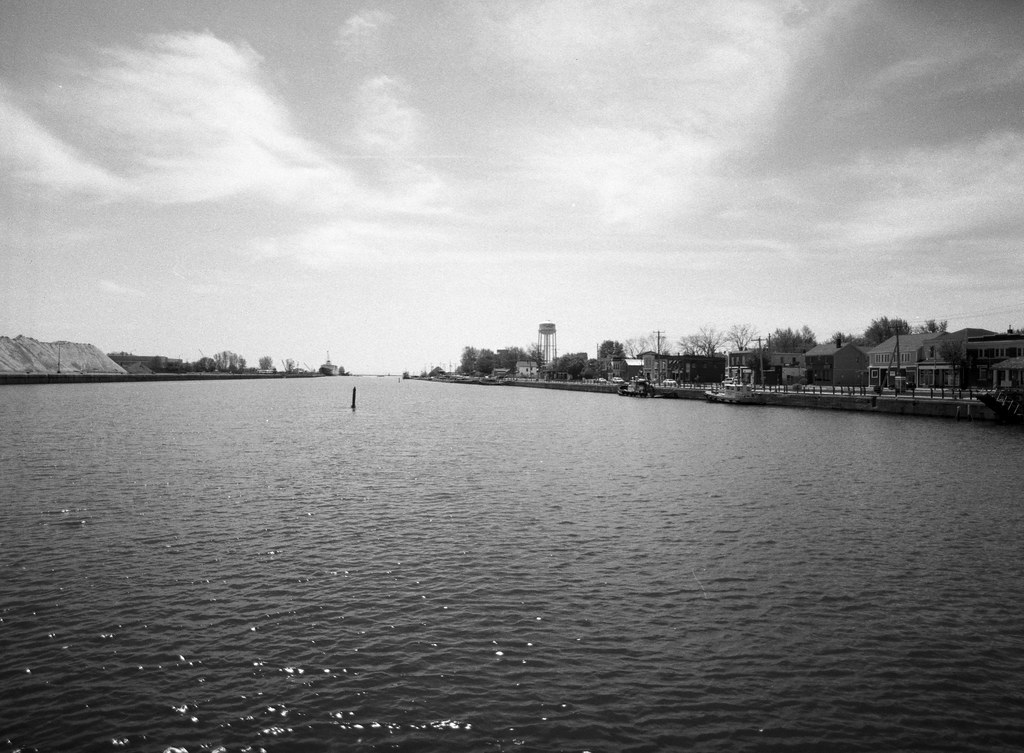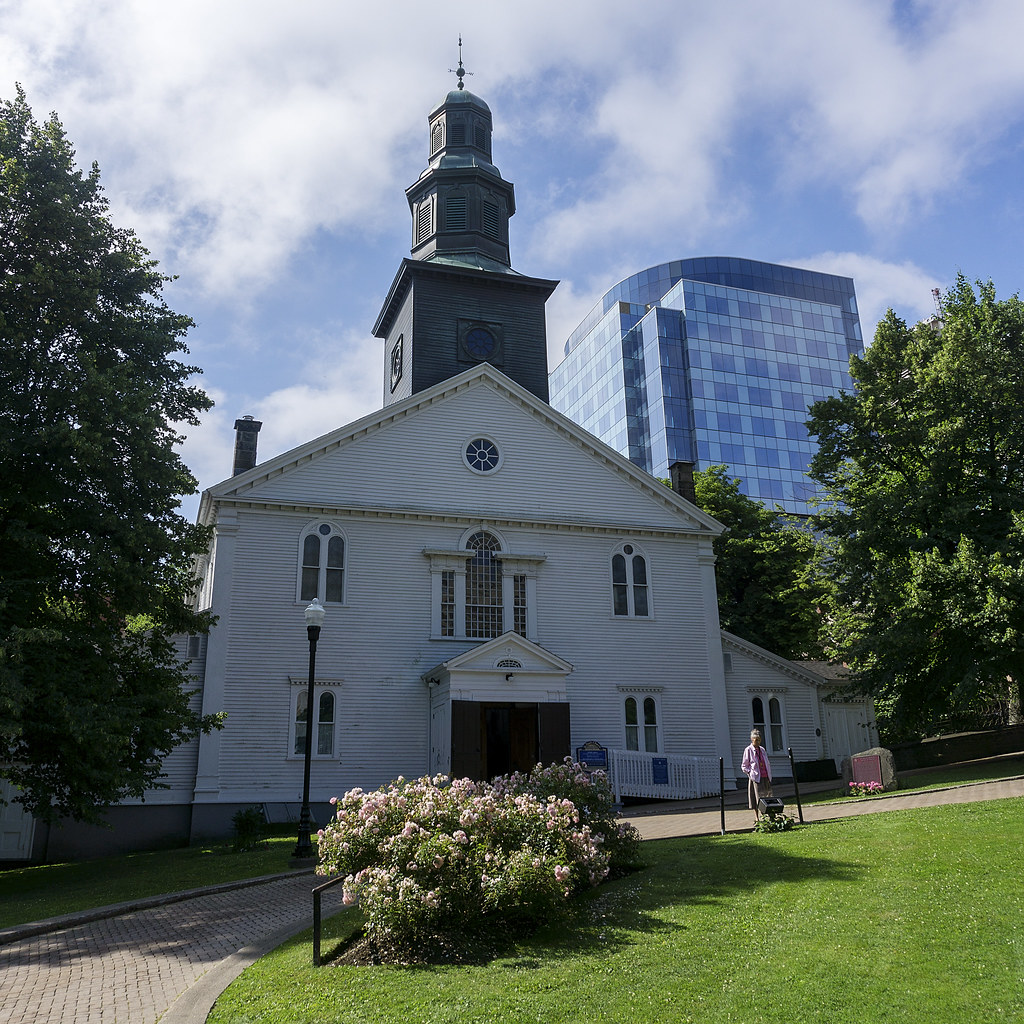Canada has throughout our collective history has been ruled through an officer known as a Governor-General or Lieutenant-Governor. These men (and women) operate as a representative of the crown. Today the office is more of a symbolic role, serving as a figurehead and patron of the arts, Colonel-In-Chief of several Regiments within the Canadian Armed Forces and Reserves. But the office has a far-reaching history back to when they ruled directly or through a Provincial Parliament. The governors that ruled in Pre-Confederation Canada were among those who often ruled directly as autocrats, with an iron fist or a velvet glove. The first of these Lieutenant-Governors is John Graves Simcoe. Simcoe set the bar for future governors and provincial power. But within the days before the War of 1812 and leading up to the Upper Canada Rebellion three governors would play critical roles in setting the stage for the Province’s future.

Rolleiflex 2.8F – Carl Zeiss Planar 80mm 1:2.8 (Green) – Kodak TMax 100 @ ASA-100 – Blazinal 1+50 12:00 @ 20C
Francis Gore would mark the first governor who began to maintain the Colonial Elites as the ruling centre of Upper Canada — born in the wealthy neighbourhood of Blackheath in London in 1769. Gore would enter the British Army as an Ensign in the 44th Regiment of Foot in 1789 following his schooling. He would be promoted to Lieutenant and take a commission in the 54th Regiment of Foot in 1794. He saw combat only once in his careers during the failed campaign in Flanders during the French Revolutionary Wars. Promotion to Captain and transferred to the 17th Light Dragoons would be the career move Gore when he saw an appointment as Aide-Du-Campe to Earl Camden, the Lord-Lieutenant of Ireland. Under Camden’s patronage, Gore saw a promotion to Major and a return to active service, until the 1802 Peace of Amiens. The peace saw many officers retire on half-pay, Gore among them although he continued to serve as inspector of the Territorial Volunteers as a Lieutenant-Colonel. Though Camden again gave Gore a leg up in 1803 with an appointment to Burmuda as Lieutenant-Governor and 1806 posting to Upper Canada as the colony’s Lieutenant-Governor. Under Gore, the Provincial Roads improved along with the sedentary militia and defences with the help of General Sir Isaac Brock (although Brock had not yet received his knighthood). Gore also improved the schools within the province and streamlined the colonial administration and parliament. When the war was inevitable, Gore would depart in 1811 leaving Brock in charge as President of the Executive Council. He would return to Upper Canada in 1815, banking on the Anti-American feelings following the war and with the direction of the colonial elites he imposed several bills designed to curb American immigration. The general population and the Legislative Assembly did not look kindly upon Gore’s actions, and some, including Robert Gourlay, spoke out against his actions. Gore suspended the Assembly. Many in Upper Canada did not look kindly upon the leadership of Gore, many in the elite were fond of the Governor and voted to recognise his efforts through a commemorative award. Gore would return to England in 1817, replaced by Samuel Smith. Smith would rule until 1818, and continue with the same hard line as Gore.

Sony a6000 – Sony E PZ 16-50mm 1:3.5-5.6 OSS
Smith’s replacement, Sir Peregrine Maitland, arrived in 1818. Maitland, born on 6 July 1777 in Longparish, Hampshire had a long and impressive military career before his appointment to Lieutenant-Governor. He entered the Army as an Ensign in the 1st Foot Guards (Today the Grenadier Guards) in 1792, serving in the Flander’s Campaign and earned a promotion to Lieutenant in 1794. Unlike Gore, Maitland continued to serve in the Army, fighting at Vigo, Corruna, Walcheren, Cadiz, and Seville. His service saw rapid promotion, and by 1803 he ranked as a Lieutenant-Colonel. By the Battle of Waterloo in 1815 he stood as a Major-General. He served with distinction first at the Battle of Quatre-Bras and the Battle of Waterloo. During the battle, he commanded two Battalions of the 1st Foot Guards and repelled the final assault by the French Imperial Guard. The assault is now in the 1st Foot Guards regimental history where the Regiment earned the title Grenadier Guards and their iconic bearskins. Among the honours bestowed on Maitland, King George III made him a Knight Commander of the Order of the Bath. When Maitland arrived, he faced a split in the Province’s loyalty. The Scottish reformer, Robert Gourlay, had begun to question the land use and the rule by the colonial elite. And many of the elites saw Gourlay as a threat. Maitland, believing the elite were in the right made life difficult for Gourlay including having his arrested and charged under the 1804 Alien Sedition Act. And while the charges were illegal as was Gourlay’s arrest, his actions saw Gourlay exiled and force the reform movement underground. Maitland continued to support the elites, ensuring their power continued to exist. He also proposed that the indigenous peoples of Upper Canada be forced into reeducation to move them from hunting to agriculture and ‘fit in’ to British culture and civilisation. Maitland would also oversee the sale of the Huron Tract to the Canada Company and the creation of the Welland Canal Corporation. In 1828 he would be appointed to the Governorship of Nova Scotia.

Nikon F6 – AF Nikkor 50mm 1:1.4D – Kodak Tri-X 400 @ ASA-400 – Kodak D-76 (1+1) 9:45 @ 20C
Maitland’s replacement, Sir John Colborne, like Maitland, followed a similar career path. He was born on the 16th of February 1778 in Lyndhurst, Hampshire, Colborne first attending school at Winchester College in London before joining the 20th Regiment of Foot as an Ensign. His ensign’s commission would be the only commission he would purchase. By his first action in 1799 at Alkmaar, he held the rank of Captain-Lieutenant (the most senior Lieutenant within a unit). Promotion to Captain followed in 1801. He served with distinction during the campaigns in Egypt, Maida, Benavente, and Corunna. At Corunna, the dying wish of General Sir John Moore was Colborne’s promotion to Major. A wish granted in 1809, as Major, Colborne served with the 66th Regiment of Foot. He continued to serve in Europe, at Ocana, Bussaco, and Albuera. He would transfer to the 52nd Regiment of Foot after the 66th suffered drastic losses at Albuera. During the Siege of Ciudad Rodrigo Colborne suffered injury and returned to England for his recovery. His recovery did not hurt his career as he returned in 1813 as a General and command the entire Light Division, and at the end of the Peninsular War be appointed a Knight Commander of the Order of the Bath. He would again take command of the 52nd at the Battle of Waterloo and seeing the French Imperial Guard move on the weakened centre, ordered his men to push the guard’s flank firing into them, allowing Maitland’s Guard to push forward. His quick actions earned him a promotion to Major-General and appointment to the Island of Gurnsey as the Lieutenant-Governor. Colborne was appointed to Upper Canada in 1828. Under Colborne, the Welland Canal saw completion and arranged for improvements on the Provinces Roads, including the Huron Road. Colborne would also found Upper Canada College, a private school to educate the children of the Colonial Elite as the future leaders of the province. He planned out orderly immigration from England, to preserve the Anglican English element, efforts that changed the fortunes of the Reform movement. He ensured that men like William Lyon MacKenzie were initially silenced, but he would be forced to protect MacKenzie after orders came from London. And in 1836 he would be promoted to Lieutenant-General and be appointed as Lieutenant-Governor of Lower Canada.

Mamiya m645 – Mamiya-Sekor C 35mm 1:3.5 N – Ilford FP4+ @ ASA-100 – Kodak D-23 (Stock) 6:00 @ 20C
Upon his return to England, Sir Francis Gore served as the Deputy Teller to the Exchequer until the positions abolishment in 1836. He was following that his health saw a marked decline and he never served in a position of authority again, dying on the 3rd of November 1852 in Brighton. Maitland served with distinction in Nova Scotia and became a popular governor of the Province. During his leadership he provided a strong moral compass for Halifax society, setting the example himself by walking to church services and banning military parades on Sunday. He also arranged for the settlement of Cape Breton Island. He resigned his post in 1832 due to ill health. However, he would recover while in England. He served as Commander-In-Chief of the Madras Army until 1838. He returned to the governor’s office in 1844 governing Cape Colony, what is today South Africa. He again provided a strong moral compass for the colony and negotiated several border disputes successfully and without the use of violence. He would be appointed to Knight Grand Cross of the Order of the Bath before his death on the 30th of May, 1854. Colborne’s tenure as Lieutenant-Governor would be marked by the Lower Canada Rebellion, and Colborne personally led British and loyalist militia forces in many engagements. The Loyalist victory at the Saint-Eustache is credited to Colborne and earned him an appointment as Knight Grand Cross of the Order of the Bath. When John Lambton resigned as Governor General of British North America, Colborne would serve in the role until 1839 when replaced by Charles Thompson. His services in Canada would earn him the title of Baron Seaton. From Canada, he travelled to the Ionian Islands where he served as High Commissioner in 1843. He was made Full General in 1854 and serve as Commander-In-Chief of British forces in Ireland, a post he held until his retirement in 1860. At his retirement, he would be promoted to Field Marshall. He would die peacefully three years later on the 17th of April 1863.

Sony a6000 – Sony E PZ 16-50mm 1:3.5-5.6 OSS
Today in Ontario several items can trace their heritage and name to these early governors. For Francis Gore, there is little, save a small street, Gore Vale near Trinity Bellwoods Park in Toronto, and there is speculation that Gore Township in Quebec is named for Francis Gore. The towns of Maitland and Port Maitland, both in Ontario trace their name to Sir Peregrine Maitland. The Church of St. John the Evangelist in Niagara Falls traces its beginnings to Sir Peregrine Maitland and still operates today as one of the oldest Anglican Perishes in Ontario although the original building was replaced in 1957. And there is the darker heritage for Maitland in the form of Residential Schools which operated in Canada 1884 to 1996 and remain a source of shame and horror on Canada’s relationship with the Indigenous Peoples. Maitland is also remembered well in Nova Scotia with a small town near Dartsmouth bearing his name, a small town and river in South Africa also bear his name. For Colborne, his greatest achievement in Ontario is the continued operation of Upper Canada College, while the original campus would move in 1891, it has continued to operate in its Deer Park Campus since that time. The college remains the oldest independent school in Ontario and the third oldest of its type in all of Canada. A statue of Colborne stands on the campus today, created by George Adams in 1990. A plaque marks the original location on the side of the Elephant and Castle Pub at King and Simcoe in Toronto that was placed there in 1929. The town of Port Colborne takes its name from Sir John Colborne.